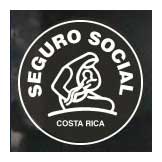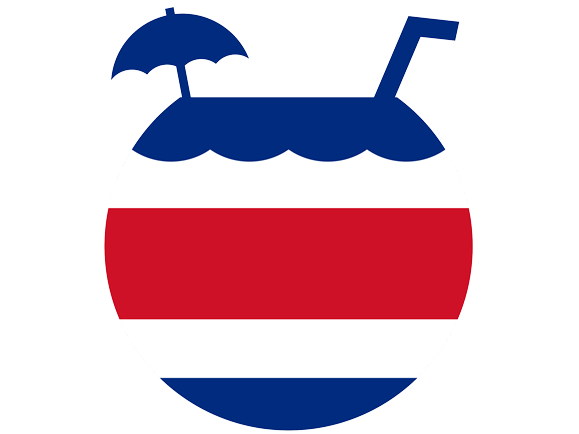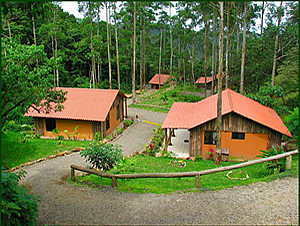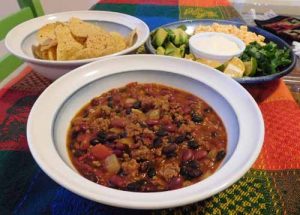Tips for Living in CR, Life in CR
Retire for Less in Costa Rica – Final Newsletter, October 27, 2020
Welcome to our Retire For Less In Costa Rica Newsletter
In This Issue:
- What’s Up with the Yeatmans? It’s the End of an Era.
- Our Final Cost of Living Update and Some Closing Thoughts from Paul
- Costa Rica in the Time of Covid-19
- The Top 10 Qualities of Successful Expats in Costa Rica
- Cooking in Costa Rica: An Expat’s Guide to Buying Groceries, Cooking and Eating in Costa Rica
What’s Up with the Yeatmans? It’s the End of an Era.
by Gloria
Costa Rica has been good to us. We have called it home since April 2009. We have made friends, adopted cats, lived in a cabin in the woods, a house surrounded by jungle, and an apartment in town. We bought a car, started a relocation tour business which continued until this past February, learned about and used socialized medicine, spoke Spanish, and participated in the local culture.
I learned to cook gallo pinto, patacones, arroz con pollo, and roasted platanos sweetened with tapa dulce. I learned to make coffee the traditional way, with a chorreador, and tortillas with a wooden press. I shopped in pulperías and at the feria, buying eggs by weight instead of by the dozen, bought fresh-picked tropical fruits, and went to carnicerías for meat instead of buying it prepackaged in the grocery store. And I even wrote a book about shopping and cooking in Costa Rica.
I learned about living in tune with nature and how great the rainy season can be for taking afternoon naps as the aguaceros (downpours) pound the metal roof. I came to Costa Rica only knowing a few words of Spanish and can now have conversations with native Spanish speakers without my head exploding from the effort. And I got to be a “monkey mama” in a refuge for orphaned howler and spider monkeys, which will always remain one of the highlights of my life.
But, it’s the end of an era. After 12 years of writing and managing our website, 11 years of giving customized relocation tours, and then later, developing and offering our healthcare tours, and nine years of sending out monthly newsletters, we are “retiring” from Retire for Less in Costa Rica.
As I look back on the years of doing this website and our relocation and healthcare tours, I remember getting to know so many really interesting people, many of whom are still part of our lives. I get a deep sense of satisfaction about the thousands of people we have helped over the years. It has been a privilege to get to share your expat journeys and to share our lives with you.
We appreciate the trust and loyalty of so many of you over the years. Whether or not you ultimately decided to relocate to Costa Rica, stay in your home countries, or chose to move elsewhere, we hope that we helped you make the best decision for you. Costa Rica isn’t for everyone; neither is living outside the country of your birth. So our goal was never to convince you to move to Costa Rica; it was to show you what life could be like here, to give you information and to show you the possibilities. For us, it has been possible to live a good life, for less, in Costa Rica and we wanted to show you how we have been able to do it for around $2,000 USD per month. Of course, it all depends on your choices.
True, Covid-19 brought an end to our tour business; we gave our last tour in February. Though Costa Rica is beginning to open up to tourists again, we don’t believe it is safe yet — for us or for you — to resume touring. And, to be frank, we are just weary and have decided to discontinue Retire for Less in Costa Rica.
What does the future hold for Paul and Gloria? Like most of the rest of the world, we are staying close to home, and will continue to do so until this pandemic is over and an effective vaccine is available. We will continue to divide our time between Costa Rica and Oaxaca, Mexico while social distancing and following all of the other recommended protocols for staying healthy.
We have decided to give up our apartment in downtown San Ramón at some point over the next 6-9 months and will be transitioning to a furnished rental for our time in Costa Rica. Many of you have visited us in this apartment as part of your relocation or healthcare tour. If you have any interest in living where we currently live, with the ability to walk everywhere in town and have close access to shopping and healthcare, please let us know and we can give you more information. There is also the option of buying our furniture, appliances, and car which we will be selling upon leaving the apartment.
It’s time for a new chapter in our lives and we are excited about it, though we are still figuring out some things as we go along. Again, thank you for following our lives, reading our newsletters, and engaging with us over the years. This is truly a bittersweet time for us. We hope that, over the years, we have inspired you to follow your dreams.
Related Articles:
- Following the Beat of Our Own Drummer
- Reinventing Yourself in Retirement
- More Fun Than A Barrell of Monkeys
 Our Final Cost of Living Update and Some Closing Thoughts from Paul
Our Final Cost of Living Update and Some Closing Thoughts from Paul
by Paul
Cost of Living & Having a Reserve
We have always managed to live in Costa Rica on about $2,000 a month but prices are going up all the time. International Living says you need about $2,500 a month for a couple to live in Costa Rica and I would tend to agree. It is, as they say, one of the most expensive countries in Central America. Nonetheless, Costa Rica gave us everything we needed — a beautiful place to live, affordability, and a healthcare system that saved my life. We’ve been able to live worry free without much stress.
Here are our cost of living summaries for the past two months. (Note: these reflect our cost of living expenses only, and do not include business expenses or charitable giving.)
Some of you who have read Retire for Less for a while know we started out with just $922 a month of guaranteed income more than 11 years ago. Today, our combined pensions are only $1,226 per month (Gloria doesn’t collect Social Security yet). Luckily, over time we have managed to earn the extra $800 a month it took to survive here. At the same time, we always had a reserve because you never know what can happen. A reserve might be needed for private health care, an automobile, repairs, or furniture. You just never know. We have lived well on this $2,000 a month, but caution you not to move to Costa Rica with just $2,000 a month of Social Security or pension and no “cushion.”
 If you have a savings reserve it pays to invest it wisely in Costa Rica and we have done that. Over the years we’ve averaged about a 10% yearly return on our money by investing in Costa Rican Certificates of Deposit at Coopenae. Today that return has gone down considerably to approximately 6% on a one-year colones CD. Still, just a few months ago we were able to get a 2-year CD in colones at 9%. We’re happy with that. So all this time, over these last 11 years, our reserve has grown by selling our house in the States, through our small Retire for Less in Costa Rica business, our CD investments, and by working online. Incidentally, we have never touched savings since arriving. Our savings have only grown. Today, we are in a much better financial position than we were when we arrived.
If you have a savings reserve it pays to invest it wisely in Costa Rica and we have done that. Over the years we’ve averaged about a 10% yearly return on our money by investing in Costa Rican Certificates of Deposit at Coopenae. Today that return has gone down considerably to approximately 6% on a one-year colones CD. Still, just a few months ago we were able to get a 2-year CD in colones at 9%. We’re happy with that. So all this time, over these last 11 years, our reserve has grown by selling our house in the States, through our small Retire for Less in Costa Rica business, our CD investments, and by working online. Incidentally, we have never touched savings since arriving. Our savings have only grown. Today, we are in a much better financial position than we were when we arrived.
Saving Money
Instead of making money, maybe it’s important to you to to save money. There are certain tips that I’ve always proposed to live less expensively in Costa Rica and without debt. We come from the U.S., a country where everybody’s striving to get ahead, with many living above their means and with lots of debt. We opted to live debt-free, live more simply, and within our means.
Over the years, I wrote a series of articles called “Paul’s Money Saving Tips,” but there’s one particular tip that I went to elaborate on & that’s housing. If we had not followed this tip we would have needed 2,500 to 3,000 a month to live here. As you can see in the article highlighted below, the difference between a $500 apartment and $1,000 apartment is $500 and that’s $6,000 a year when you rent — and we always recommend renting for at least 6 months, if not longer.
Other things to consider, for example, are whether or not the rental is furnished, and if the monthly rent includes any utilities or cleaning service. These things alone can add hundreds of dollars to your monthly costs or you can look at it like, “Yes, I can afford $800 or $1,000 monthly since all these things are included.”
Healthcare Savings
Of course, the other big savings might be Healthcare. There are some big decisions to be made if you truly want to live in Costa Rica full-time. Naturally, if you have a family you might be returning back to your home country once or twice a year. If that’s the case you may want to keep your Medicare B. I opted out of mine when I was 65 because we don’t think we are going to live in the USA again. Gloria is only 63. When she’s 65 she will have a decision to make whether she wants to opt out of Medicare B or retain it. My guess is she will opt out, since we don’t plan to live in the U.S. ever again. That being said, we are still U.S. citizens and no one knows what the future might bring.
 Again, a tremendous saving can be found in healthcare. You probably won’t believe this, but our health care costs in Costa Rica are just $75 per month for the both of us. We pay approximately $50 a month for the Caja — Costa Rica’s universal health plan — which is our base, & $25 a month for a private hospital discount plan that offers major savings (including an annual cancer screening option for each of us). Of course, if we need to see a specialist privately, that cost is added to our monthly expenses. The monthly cost for the Caja is based on your guaranteed income and, because our income was only $922 when we arrived and only $1,226 today, we pay just $50. In exchange for that $50 we’ve received peace of mind.
Again, a tremendous saving can be found in healthcare. You probably won’t believe this, but our health care costs in Costa Rica are just $75 per month for the both of us. We pay approximately $50 a month for the Caja — Costa Rica’s universal health plan — which is our base, & $25 a month for a private hospital discount plan that offers major savings (including an annual cancer screening option for each of us). Of course, if we need to see a specialist privately, that cost is added to our monthly expenses. The monthly cost for the Caja is based on your guaranteed income and, because our income was only $922 when we arrived and only $1,226 today, we pay just $50. In exchange for that $50 we’ve received peace of mind.
With this combination, we feel relaxed, confident, and stress-free about our health care. When we look at people in the States we know that many, certainly not all, but many are terrified and extremely afraid of getting sick or being in an accident, even if they have health care. This was always Gloria’s, worry, especially when she was single and living in the U.S. We don’t feel any of that here. We both had surgeries in the Caja and left with a bill of zero each time.
You can read about about our healthcare experiences here.
Lots of foreigners complain about the Caja system because of the waiting and because it’s confusing. It seems like a maze both before you move to Costa Rica and when you’re new here. But we made a commitment early on to get to know the system, not knowing at the time just how beneficial it would be for us. Sometimes when you don’t have a lot of money ($922), it forces you to do things that you would probably never do, and it can turn out to be an advantage for you, as it has been for us.
I have to admit before I came here that I had stars in my eyes about their universal system. I was naïve and wanted everything I heard about “universal healthcare” to be true. I came to find out that it was a little bit more difficult than I had thought, but again we were committed to learn the system. Many people try to use the Caja but have a difficult time and give up very quickly, which is part of the problem. I’ve noticed that people who are long-term residents tend to use it more than people who are here just for a few years. If you’re motivated, you might be able to master the system too.
Like many Costa Ricans, we use a combination of the public and and private systems to speed things up when necessary. One of the beauties of this national healthcare system is that pre-existing conditions are covered and there’s no age limit. So if you are a legal resident, you cannot be denied. However, be aware that the Caja cannot treat every condition and that not every drug or treatment therapy is available in Costa Rica.
 Remember, if you want to be a legal resident you must join the Caja, so if you’re going to pay something for it, you might as well get something out of it. However, many expats treat the monthly Caja payment as a “tax” for the right to live here and choose not to use the health services. I would estimate that the majority of foreigners would not set their feet in a Caja hospital, but we have found that Canadians living in Costa Rica, for example, are much more accepting of universal healthcare here.
Remember, if you want to be a legal resident you must join the Caja, so if you’re going to pay something for it, you might as well get something out of it. However, many expats treat the monthly Caja payment as a “tax” for the right to live here and choose not to use the health services. I would estimate that the majority of foreigners would not set their feet in a Caja hospital, but we have found that Canadians living in Costa Rica, for example, are much more accepting of universal healthcare here.
Again, if you keep your Medicare B you may want to go back to the States a couple of times each year to do a procedure. You may find that that gives you peace of mind. We chose otherwise.
A word about MediSmart. This is the private discount plan that we purchased. (NOTE: this is not insurance; it is a discount plan.) There’s no age limitation or exclusions of pre-existing conditions for this plan either.  You can join it the day you arrive and pay just for a month or two or more. The coverage begins the day after purchase. Their discounts range from 80% to 40% off of their normal low costs.
You can join it the day you arrive and pay just for a month or two or more. The coverage begins the day after purchase. Their discounts range from 80% to 40% off of their normal low costs.
The MediSmart plan is run through Metropolitano Hospital in Central San Jose, Costa Rica. We can drive there from San Ramón in about an hour and 15 minutes. The hospital is open 24 hours and has an emergency room. The hospital only has eight private rooms, but many of the procedures are outpatient. A friend of mine had a hernia procedure there for $3,500 while, on one occasion, Gloria and I each had an ultrasound, and Gloria also had mammogram for the discounted price of $133 for all three. All were done on the same day. We were in and out with results and scans in just a few hours.
As the US is the most expensive place in the world for healthcare, you can imagine that you will save money in this area in almost any other country, not just Costa Rica.
I know what I am going to say can be controversial…
I gave up on the U.S. after Vietnam. If you want the American dream, if you want a good life, then move to another country where things make more sense. If you’re in your twenties or thirties, take your kids and start a new life somewhere else. If you’re older, then retire somewhere else. We live in Costa Rica & Mexico, but you can choose Canada, France, Germany, England, Sweden, Denmark, Italy, Portugal, Spain, etc. It would be a lot better for your family and whole lot better than the United States.
The Retire for Less Philosophy
When we started our website Retire for Less in Costa Rica we wrote down a philosophy. It’s on page one of our website and over 12 years later we still believe in it. It’s as true today as it was then.
Change Your Mindset
By mindset, I mean a way of thinking, a way of looking at the world and your place in it. In Costa Rica, Mexico, and in many other countries around the world, people have a mindset different than that of people in the United States.
If you can get into the flow of life here, it can be very tranquil and relaxing. Almost all Americans come down here and say they’re an “A” personality when they’re really not. That “life in the fast lane” in the United States might make you an “A” personality, but if you give living in another country a chance, you might find that you can really learn to kick back pretty well.
The mindset of many Latinos is somewhat fatalistic. I’m not a psychologist, but the way I define fatalism may be slightly different than what the dictionary might say. I think to be fatalistic is a prescription for happiness. Expectations are low and acceptance is high.
In Costa Rica and many other countries, people do what they think is the best they can and then give the rest up to Him. When they say, “si Dios quiere” or “Gracias a Dios” it’s a way of giving up control to their God. You hear it all the time in Costa Rica. It’s almost like a mantra. Some might say it’s an excuse. Well, maybe it is, but from my point of view, it’s a great way to live because you are not constantly striving, you’re not trying to get the next promotion, the raise, the car, or whatever, and it makes you relaxed because you know you’ve done the best you can. It may not be enough but you’ve done the best you can and the rest is up to him.
I guess I’ve always been this way, most of my life anyway — a guy with low expectations and high acceptance, and a “stress avoider.” I never liked the price one had to pay to be a “success” in the traditional sense. Maybe I’m not a “success” in the world’s eyes, but today at 74, I can say I’m one happy man.
Costa Rica in the Time of Covid-19
by Gloria
Like people all over the world, Covid-19 has changed our personal, social, and business lives. Other than leaving home to buy groceries, going out for medical appointments, prescriptions, or other necessities, and Paul’s morning walks at 5:00 a.m., we stay home. We wear cubrebocas (masks), take hand sanitizer with us when we leave the apartment, and we wash our hands many, many times a day. We have learned to touch elbows in greeting instead of hugging and kissing which is part of normal daily life in Costa Rica.
We don’t visit friends, stay away from crowded stores, and walk down less-traveled streets. The park in our town remains closed, all public events have been cancelled, and even our go-to beach, Playa Doña Ana, was closed when we drove by recently. We have discovered online Scrabble and jigsaw puzzles, Facebook Live and Instagram Live concerts, lectures, and cooking demonstrations. We started having themed dinners of various cuisines – Greek, Italian, Thai, Mexican, Moroccan, and Irish to name a few — with complementary music and candlelight. On Italian night, we ate on my Sicilian mother’s china, and on Mexican night, we dressed up on our Oaxacan clothes.
Early on, from March through June, the Covid-19 numbers were low in Costa Rica. On March 11, 2020, Costa Rica’s Ministerio de Salud (Health Department) published the first of what was to become daily updates of Covid-19 cases nationally, broken down by sex, age, province, nationality (Costa Ricans/foreigners), daily confirmed (confirmados), total active (activos), recovered (recuperados), tested-negative cases (descartados), cases of people in intensive care (unidad de cuidados intensivos), and eventually, the number of deaths (fallecidos) attributed to Covid-19.
#QUEDATEENCASA (quédate en casa = stay home – it’s an act of responsibility) became the watchword on social networks, official notices, and even advertisements for restaurants and other businesses that began offering home delivery. As some restaurants and small businesses closed — either temporarily or permanently — a new niche business sprang up offering home delivery of whatever you needed via motorcycle. Farms around the country started offering home delivery in their trucks and we started getting weekly deliveries of the freshest organic vegetables and herbs.
In July, the numbers of cases began to rise rapidly and still continue to rise. Later reports included statistics about the number of tests that had been administered to-date, hospitalizations broken down by hospital, and cases broken down by county and district. Though the numbers of Covid-19 cases have risen, deaths remain at about 1.3%.
We still feel good about Costa Rica’s response to the pandemic. In a situation where no one knew just how this virus would play out, Costa Rica’s public health professionals published guidelines, shared WHO situation reports, closed the country to tourism, closed schools, beaches and tourist attractions, and encouraged work-from-home wherever possible. They enacted driving restrictions, cancelled all public events, and eventually, made the wearing of masks mandatory.
In hindsight, did they do everything right? No, of course not, but they adjusted their guidelines and restrictions as more information became available. All along the way, these restrictions have been met with a whole range of responses, from gratitude and trust by most, anger and resentment by some, and complacency by many, especially as time has gone on. Costa Rica has a very social, family-based culture where parties and celebrations are the norm. Hugging and kissing in greeting, celebrating holidays with the extended family, and going out to have a few cervezas on the weekend are all part of the Tico culture so it has been hard for many to make the necessary changes.
Costa Rica’s Health Minister, Daniel Salas, is increasingly concerned that the country’s health care system may soon be approaching its maximum capacity, the Tico Times reported: “Costa Rica can allocate up to 359 ICU beds for coronavirus patients. An additional 986 can accommodate less-serious cases, though using them affects other health services.”
It has become commonplace now to see bottles of hand sanitizer or hand-washing stations at the entrances of stores and public buildings. There are spray bottles of disinfectant and paper towels outside of grocery stores to clean off your cart. Some hair salons offer disposable masks and only take clients by appointment.
Covid-19 has hit Costa Rica hard economically. In August, the unemployment rate reached 24%, the highest in its history, partly because tourism is such a large part of the national economy. Costa Rica closed its borders on March 18, 2020 and has only recently, cautiously, and selectively opened up tourism. Legal residents living outside of the country were allowed to return, but flights were limited. The Tico Times reports that “While Costa Rica has begun a gradual reopening for international visitors, the International Air Transport Association has said global air traffic won’t return to pre-pandemic levels until 2024.”
Costa Rica Entry Requirements
- Currently, foreigners (regardless of nationality) are allowed to enter from commercial flights to Costa Rica from the following countries :
- Australia
- Mexico
- The Schengen Zone of the European Union
- United Kingdom
- Uruguay
- Jamaica
- Asia: Japan, South Korea, Thailand, Singapore and the People’s Republic of China
- Oceania: Australia and New Zealand
- United States, see below for current restrictions
In order to enter, tourists must have stayed at least 14 consecutive days in one of the countries mentioned above.
- As of October 26, residents of the following U.S. states can visit Costa Rica:
Connecticut, Maine, Maryland, New Hampshire, New Jersey, New York, Vermont, Virginia, Washington, D.C., Arizona, Colorado, Massachusetts, Michigan, New Mexico, Oregon, Pennsylvania, Rhode Island, Wyoming California and Ohio, Florida, Georgia, Texas.
- Beginning November 1, Costa Rica will open its airports to tourists from all countries and U.S. states.
Source: Costa Rica Embassy at http://costarica-embassy.org/index.php?q=node/149
- As of Monday, October 26, Costa Rica no longer requires that arriving tourists show proof of a negative coronavirus test. Read: Costa Rica no longer requires coronavirus test for entry, Tico Times, 10/26/2020
- Visitors must show proof of an accepted travel insurance policy covering them for Covid-19.
- There is no longer a two week quarantine regulation.
- There are specific entry requirements for tourists, legal residents, and citizens. Be sure to check your category at the Costa Rica Embassy site.
- Everyone must complete an online “Health Pass” which is available in both Spanish and English at https://salud.go.cr/. “To protect your health and the health of its inhabitants, the Government of Costa Rica has ordered sanitary control measures for passengers upon arrival to the country. This electronic form known as “Health Pass” or “Health Pass” is one such control measure. From this website, you can complete your Health Pass and obtain a QR Code to show to airport authorities upon arrival to Costa Rica.”
Resources:
- Ministerio de Salud (Costa Rica’s Health Department) Facebook page: https://www.facebook.com/msaludcr/
- Ministerio de Salud (Costa Rica’s Health Department) Covid-19 page on website: https://www.ministeriodesalud.go.cr/index.php/centro-de-prensa/noticias/741-noticias-2020/1725-situacion-nacional-covid-19
- Costa Rica Visa Requirements by Country: http://www.costarica-embassy.org/index.php?q=node/51#U
- Tico Times Covid-19 Coverage:
https://ticotimes.net/2020/09/10/costa-rica-authorizes-eight-more-u-s-states-for-tourism - Costa Rica Embassy Urgent Travel Restrictions: http://costarica-embassy.org/index.php?q=node/149
- Covid-19 Costa Rica Facebook group: https://www.facebook.com/groups/CovidCostaRica
The Top 10 Qualities of Successful Expats in Costa Rica
Costa Rica draws visitors and immigrants for many reasons. There is the incredible natural beauty of the beaches, the mountains, and everything in between. But visiting here is different than living here. We have met many people who visited, bought land or a house, shipped everything they own to Costa Rica, and started their new lives…only to find out within a few months or a year that they made a mistake. They didn’t do their homework before moving here.
In our experience, the following qualities are characteristic of Expats who are happy living in Costa Rica.
- Do your homework. It’s not enough that you fell in love with Costa Rica when you visited ten years ago. That’s a start, but it’s not enough. As we mentioned above, living here is MUCH different than visiting here. Read books, not just about the tourist attractions but about the Costa Rican people and their culture. Understand as much as possible what drives this culture. Read blogs of people who are currently living in Costa Rica and learn about their day-to-day lives. Try to read a variety of blogs because people write from their own individual perspectives on life here; you need to hear different sides of the issues. Take a retirement tour from someone who will tell you the good, the bad and they ugly. For us, it was the best money we ever spent and it gave us a great foundation for making the many decisions involved with moving and living here. Visit here for a week or two, and instead of doing the tourist stuff, focus on meeting and talking with people who have already made the move you are considering. Go into food stores, hardware stores, and beauty parlors…find out what things cost. Costa Rica is NOT a cheap place to live, though we do spend less money overall on a monthly basis than we did in the U.S. Ask what people pay for rent and utilities – most people don’t mind telling you. And be honest with yourself about the standard of living you require. Do you need an American-style house, or would you be satisfied with a simpler standard of living? Do you want to live at the beach where you will need to run air conditioning? The choices you make will determine how much you spend each month to live.
- If you are married, both of you must agree to move to Costa Rica. This may seem obvious, we know, but we have met several couples who did NOT agree but came anyway, hoping the more reticent partner would change their mind in time. If you aren’t on the same page about such a huge life decision, your day-to-day lives may be less than peaceful. If you are the one advocating Costa Rica and you feel you are fighting a one-way battle or are swimming against the current, agree to take a detailed retirement tour of Costa Rica first. Usually this can be done in a week. After the tour, both of you might agree that pursuing this dream is viable.We can tell you from personal experience that Gloria — even though she was the one who originally suggested Costa Rica (she said that “America is no place to get old”) — was hesitant about making the move. After our retirement tour, and once she saw it was a viable alternative, she still needed convincing. So we made three more trips of 7-14 days each in 2008. These trips did it for her. As we settled on an area, and she began to meet other people who had made this same decision, she began to get excited about our new life ahead. After all of this research, she decided to give it a try. But it was more than that actually…she made a commitment. We had already agreed upon most reasons to come here…healthcare, lower cost of living, simplicity, etc. but now we were both committed to changing our lives and making this move. You have to be on the same page, or this adventure will be even more challenging than normal.
- Rent for at least one year. Let us say it again because it’s important: rent for at least one year. Living here is different from visiting, even if you’ve visited often. We have met so many people who “just knew” they wanted to retire in Costa Rica, sold their houses in the U.S., bought a property in Costa Rica, and shipped everything they own…only to discover after 3 months or a year that Costa Rica really isn’t for them. And in Costa Rica (as in many places these days), it’s easy to buy, hard to sell. So we recommend that you resist all the temptations to buy until you’ve lived here, learned the cultural differences, the language, the microclimates, and the neighborhoods.Also, by renting, you can try out living in different parts of the country. We have friends who spent 9 months in Costa Rica living in different towns to better decide where they would like to live long-term. They considered climate, community, and many other factors important to them. They returned later for another 9 months and lived in their favorite part of the country for that time, moving between several rentals. They then had a much better idea of where they wanted to buy property and build a home.
- Enjoy the simple things of life. Included here is a list of 15 simple things to do in Costa Rica…remember, the number one question we get from people interested in moving here is “what do you do all day?” Well, here goes:
- Start breathing that fresh air, windows wide open;
- Watch the incredibly beautiful clouds formations moving between the mountains;
- Put up a hummingbird feeder and watch the show;
- Meet new friends, both Expats and Ticos. For us, this turned out to be the best part of living here. Our social life is 10x what it was in Baltimore – of course, we have a lot more free time and we’re not going to work tomorrow either.
- Relax in a hammock and read a book (for the first time in his life, Paul began reading novels);
- Visit friends, have guests over for lunch or dinner, entertain (obviously, during Covid-19 times, only do this safely);
- Learn to cook or bake new things. Gloria now bakes our own bread – banana bread, 18 hour No-Knead bread, granola bread, pita bread, and also makes our own yogurt, peanut butter, tahini, and hummus. She has the time, and she enjoys it! Of course, Paul gets to eat what she makes and does the dishes too!
- Take naps (one of our favorite things);
- Make your friends jealous on Facebook;
- Take the bus to town — all it takes is 30 cents and maybe ½ hour — and people-watch in the Parque Centrale, then eat lunch at the Central Market for $1.50.
- Go to the beach and see the monkeys;
- Volunteer a few hours a week. This should make you feel good…contributing always does. And science proves it’s good for your health;
- Take a weekend trip to explore Costa Rica. We take one almost every month, for very little money;
- You can always watch a little TV in the evening. We get a lot of U.S. & British programming in Costa Rica;
- Take Spanish classes for an hour or two per week and feel a sense of accomplishment as you practice the new words and phrases. You are communicating in another language!
- Have a positive attitude!
- Be patient. Things don’t move as quickly here as they do in the U.S., for instance. There will be lines for many things…at the bus station, at the Caja to see the doctor or to get your prescription filled, at municipal buildings, to do your banking, and to get phone service. Expect it, accept it, and bring a book to read; otherwise you will be frustrated much of the time.
- Have a good sense of humor. Being able to laugh easily will get you through a lot of trying situations. It can be frustrating here in Costa Rica if you let it. Being able to laugh at yourself is extremely important, especially when you are learning to speak Spanish or dealing with Ticos. You won’t speak perfectly, but if you can laugh at yourself, you have nothing to fear! Ticos will laugh with you, and often tell you the correct word or pronunciation. Consider it part of your language training. And then there are the times when Ticos do things in a completely different manner than you expect. Sometimes all you can do is laugh…they have their reasons which, in their culture, are valid, but in our culture seem unusual.
- Be tolerant. Expats are an interesting, and varied breed. They come to Costa Rica for many different reasons and bring with them their own particular ideologies, political persuasions, and personalities. The Tico culture is also very different from what we may be used to. They may look like us but they don’t necessarily think like us. Especially if you live in a more rural area, it’s a little like small town America was in the 50s…for good and for bad, people know what’s going on in each others’ lives. And people make decisions and take actions that are often very different from what you would have done. Live and let live is important here, for your own personal peace more than anything.
- Learn to speak Spanish. By learning the language, you are better able to get to know some Ticos as individuals and families instead of just “the gardener” or “the housekeeper” or “the family who lives down the street.” If you are one of the many Expats who refuse to learn the language and expect everyone else to speak English, you miss out on many of the enriching experiences possible when getting to know people and immersing yourself in another culture.Learning a new language is challenging, no doubt, and more difficult for some than others. Regardless of your age, there is an online program, conversation group, local school, or immersion class for you. Even if you are never fluent, the Costa Ricans will love your efforts. We can’t tell you how many times we’ve gotten comments from Ticos on how much they appreciate the fact that we are at least trying to speak their language. It’s one of the keys to having a great total experience in Costa Rica. Give it a try. You can even take advantage of some free lessons right now…just click here and you’ll be speaking in complete sentences in 15 minutes.
- Join the Caja (national health care system). If you are from the United States, the uncertainty of the future of health care may be one of your principle reasons for wanting to relocate outside of the U.S. If you are legal resident of Costa Rica, under the new immigration law, you must join the Caja. The Caja is a wonderful thing. We use it extensively and you can too. Retire-for-less means just that, and this is one way to do it. Gloria had outpatient surgery at our local hospital with follow-up care and medications all included. This also included six visits to a specialist in San Jose who ordered more tests. After four months, she was given a clean bill of health and discharged. Our total out-of-pocket expenses were $90 for certain tests which we needed done quickly. We used a local private clinic and, for some of the tests, received the results the same day. And Paul had surgery to remove his kidney after a cancerous tumor was discovered, spent 13 nights in the hospital, and left on the 14th day with a bill of $0.
- Hook into the local Tico culture as much as possible. According to the Center for Religion, Ethics and Social Policy at Cornell University, there is an “epidemic of overwork, over-scheduling and time famine” in our busy North American society. You will immediately notice that the Ticos, as a group, are less stressed, go with the flow very well, are easily satisfied, and generally have a great outlook on life. Pura Vida, baby!Quite often Gringos meet a Tico family who will “adopt” them. Let them. They will help you at lot with the system and probably save you money too. Let them! If you really like this family, and they like you, they may even invite you to family functions. Again, let them. This can be rewarding and a great glimpse into the culture. Take advantage of it! Most Costa Ricans can’t do enough for you. Their reaction to Americans, Canadians, and most Europeans is very positive.
- Hook into the local Expat community. They can be a huge help when you need advice on where to bank or find available rentals, where to get good prices on things you will need, where you can buy things you want but are hard to find, and which businesses have English-speakers among their staff. Many towns have regular meeting places and get-togethers for Gringos. Often they will do book and dvd exchanges, sponsor social activities, and give you information on volunteer opportunities.
- Get involved…volunteer. People always ask us, “What do you all day?” This, without a doubt, is a very American question. But since you are probably living in the U.S. or Canada, we’ll do our best to answer it. Volunteering is one easy and rewarding way to fill up some of that time. Teaching English is a great way to help because it is needed for the future of Costa Rica’s young people. If you are Costa Rican and speak English, you can get a good job. Presently, over 5,000 young people leave the San Ramón area for jobs in Alajuela, Heredia, and San Jose. Most of these jobs are available to them because they speak English. But there are many other needs and opportunities to volunteer. Get involved…you’ll be glad you did. You can do as much or as little as you want…it’s all up to you.
We hope that this Top 10 list is helpful to you as you consider Costa Rica for Retirement. The more honest you are with yourself about your needs and expectations, the better chance you will have of being happy retiring in Costa Rica, or anywhere else actually.
Paul and Gloria Yeatman

Cooking in Costa Rica: An Expat’s Guide to Buying Groceries, Cooking, and Eating in Costa Rica
PRINT & KINDLE VERSIONS AVAILABLE!
I’m so excited to announce that my new book, Cooking in Costa Rica: An Expat’s Guide to Buying Groceries, Cooking, and Eating in Costa Rica is now available on Amazon.com! Here are a couple of my 5-star reviews:
“Outstanding. I have been looking for a book that would tell me where to buy certain items that are not available in the local Costa Rica stores and I found all of that and more. Information such as translation from English to Spanish and of course Spanish to English. This is helpful so when I am shopping I can find what I am looking for using the translation. There is a break down of measurements and substitutions that was helpful. I like the few recipes that are included, and can’t wait to try them. This is a great book with so much information to help you learn about cooking in Costa Rica. I love the layout of the book and the clear explanations, and it’s easy to locate what I am looking for without going through an entire book. Also, the resources in the back have been super helpful. Thanks so much for the book.”
“Practical as well as scholarly, this is a must-have guide for any man or woman who commands a kitchen in Costa Rica. Wonderfully readable and quickly useable for whatever and whenever you may need to know all things culinary in Costa Rica. And if that were not enough, what an amazing tour guide for English-speaking lovers of food in a Spanish-speaking culture, where the recipes you know and have always loved can come alive in new and exciting ways. I just feel smarter having read it!”
When you move to a Spanish-speaking country, it can be daunting to stock your kitchen and cook meals when you don’t know what your ingredients are called in Spanish. And even when you know the Spanish translation, it can be a challenge at times to find what you are looking for. You can download this practical, comprehensive guide and on-going reference tool on your smartphone or iPad so you have it with you whenever you shop. The table of contents is interactive, so you can easily click through to the meat section when you are at the butcher shop (carnicería) or to the dairy section when you are standing in front of the dairy case. Here’s what you will find inside:
- A little bit about me, our life in Costa Rica, how and where we shop for groceries, what we spend, and some insights about grocery shopping in Costa Rica.
- An English-to-Spanish and Spanish-to-English food dictionary, broken down into the following sections:
- Fruits
- Vegetables
- Meat & Poultry
- Fish & Seafood
- Grains, Nuts, Seeds, & Baking Ingredients
- Dairy & Eggs, Refrigerated & Frozen Foods
- Beans, Canned & Prepared Foods
- Herbs, Spices, & Seasonings
- Condiments
- Beverages
- An English-to-Spanish and Spanish-to-English food dictionary in alphabetical order.
- An English-to-Spanish and Spanish-to-English dictionary of things you find in the kitchen.
- A Glossary of cooking terms and helpful adjectives to use when buying and cooking food, ordering in a restaurant, and reading recipes in Spanish.
- Recipe substitutions for when you can’t find familiar ingredients here in Costa Rica.
-
Recipes that I have adapted to use with ingredients found in Costa Rica, plus some favorite recipes of other expat cooks in Costa Rica.
- A U.S. Measure to Metric Conversion Guide for temperature, volume, weight, and length.
- A resource section with links to expat cooking blogs, Facebook groups and pages, specialty products, and other food-related things.
Buy the print edition on Amazon.com
Buy the Kindle edition on Amazon.com
If you don’t have a Kindle, you can download the Kindle app for your iPad or computer at this link.
I hope you enjoy my book and find it useful! Gloria





